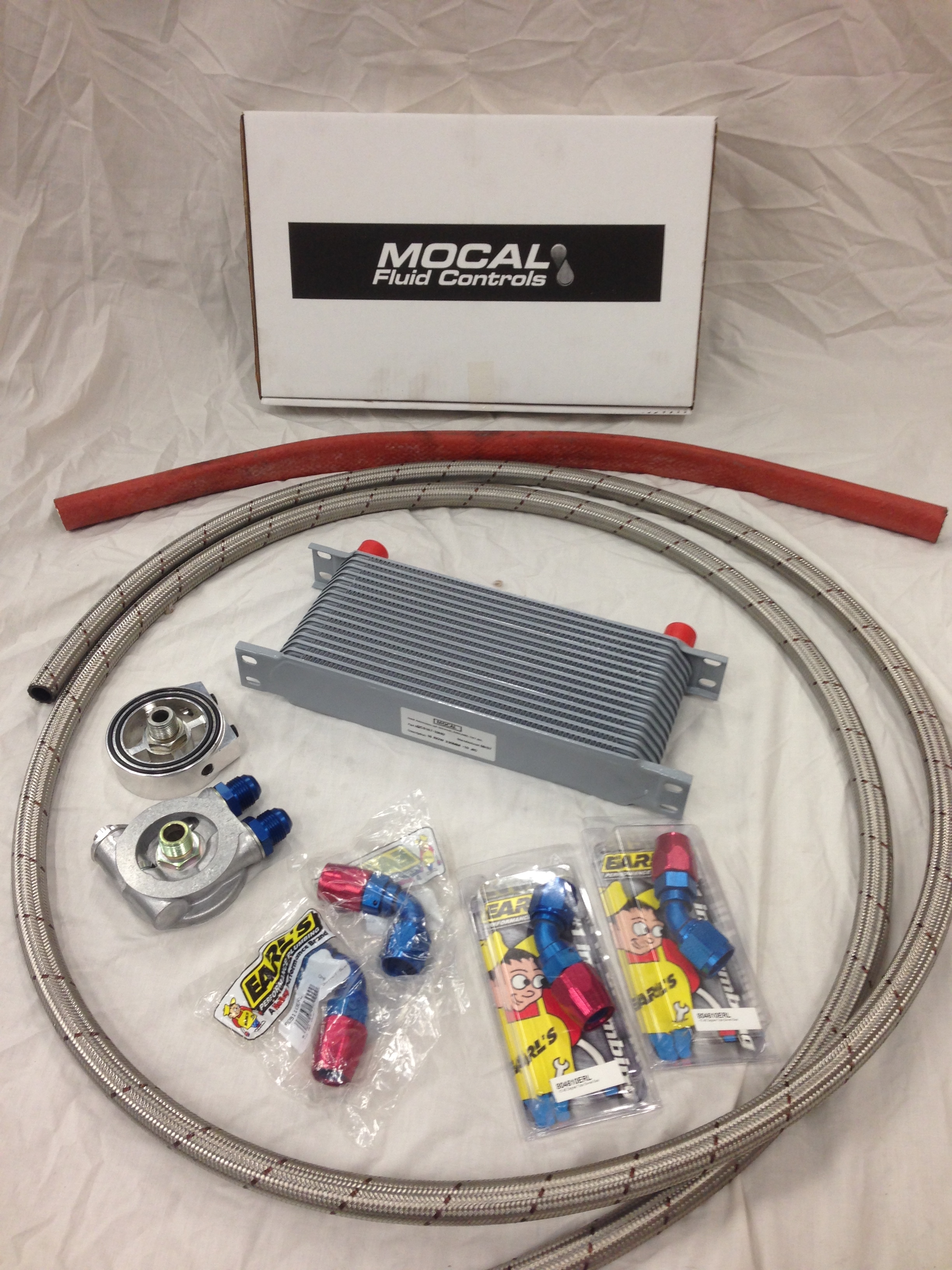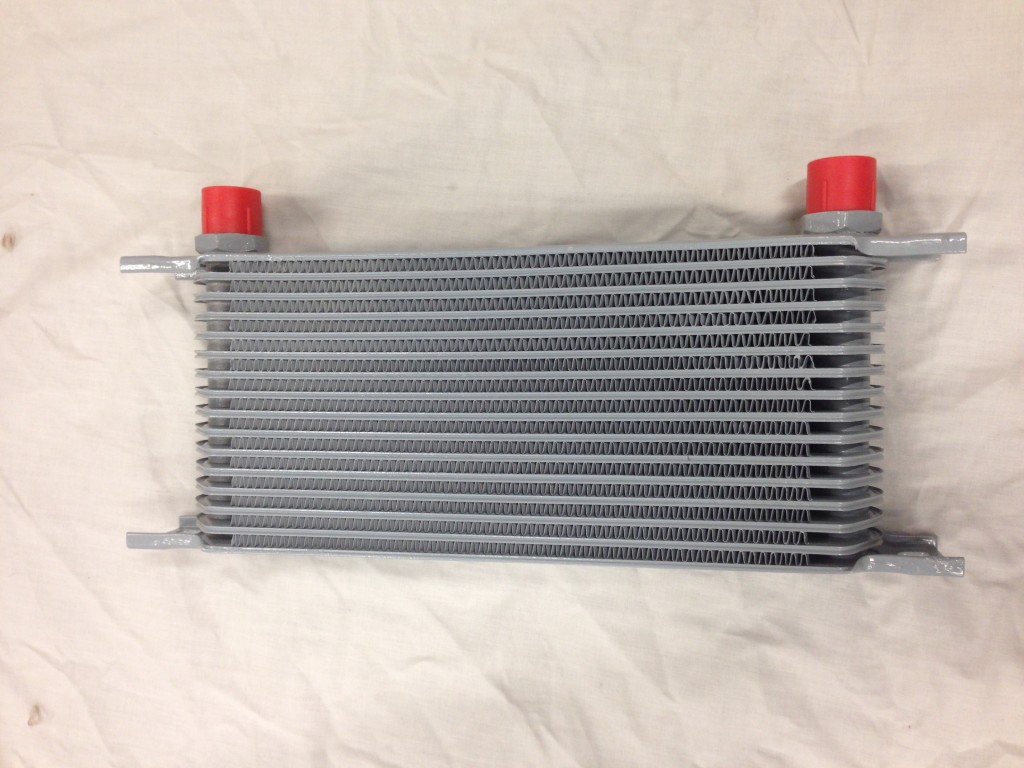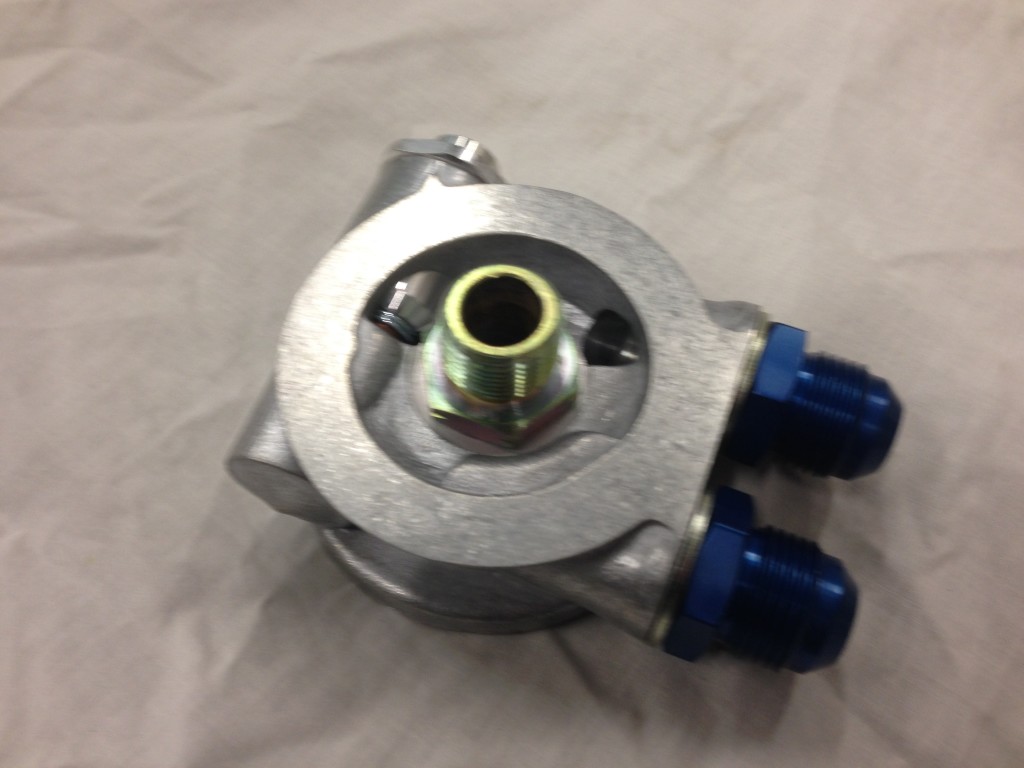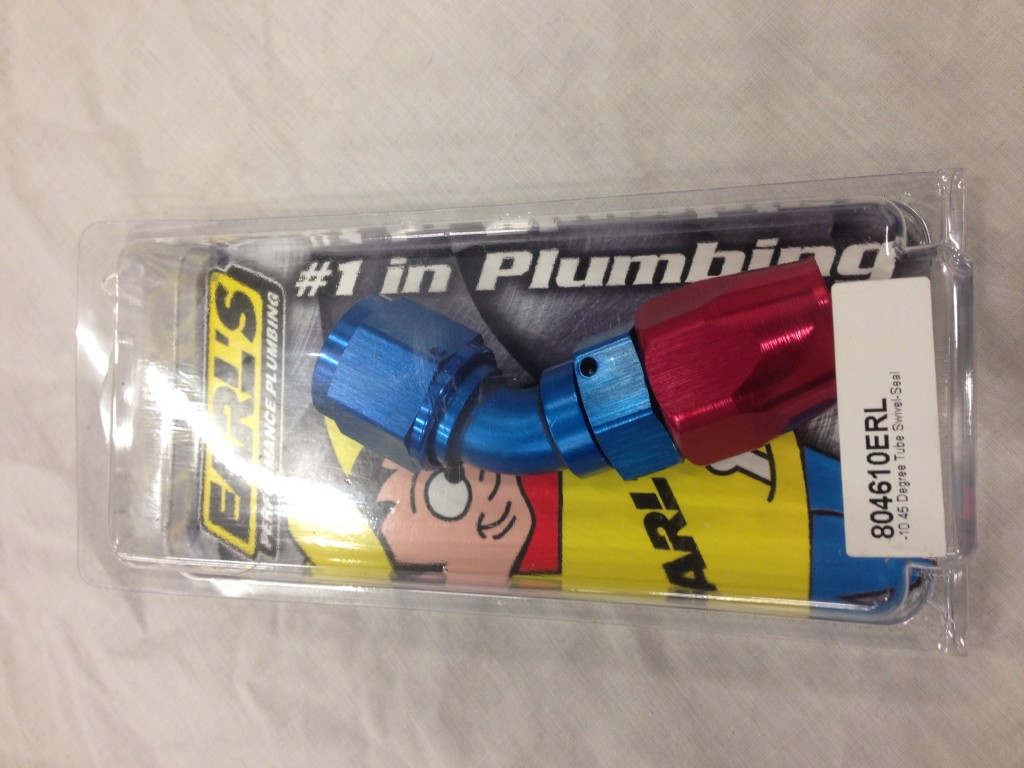External Oil Cooler…. A worthwhile modification?

An aftermarket oil cooler isn’t usually a high priority in the list of upgrades when extracting more power from a standard Impreza engine, but it shouldn’t be overlooked.
The standard WRX and STi engines have 2 separate methods of cooling the engine oil – primarily via the Modene that the oil filter screws to, which provides an interface with the cooling system and works as a heat exchanger, and secondly there’s a marginal cooling effect from heat dissipation and airflow across the sump pan. For the vast majority of the time the standard system is adequate for keeping oil temperatures in check on a standard or mildly modified road car. The Modene also aids in decreasing the time taken for the engine oil to reach operating temperature from cold, due to the interface with the cooling system which warms up a lot faster.
With additional power and/or prolonged use on track comes an increase in temps and load on the engine’s cooling systems, on both oil and water. There comes a point where the standard system cannot cope and temperatures will spiral out of control with potentially devastating effects. If the Modene is still fitted then excessive oil temps can also ‘drag’ water temperatures up with it to the point of also overheating the water system.
Even the best fully synthetic oils will only tolerate a maximum temperature of around 125 degrees celsius before irreversible damage is done to the oil, it’s lubrication and protection qualities are compromised and it requires replacement. The viscosity of any oil decreases with increased temperatures – even a 50 or 60 weight oil is surprisingly thin at 120 degrees!
To avoid overheating your oil and potentially cooking your engine, it’s vital to have an aftermarket oil cooler kit fitted.
Both Mocal or Setrab produce quality cores in varying sizes. In most applications a 16 or 19 row core is sufficient. It’s important to not use a core that’s too large, as the oil will not reach a sufficient operating temperature – 80 degrees C is an accepted minimum, but nearer to 100 is desirable as it will enable moisture in the crankcases to evaporate off.
A 16 Row Mocal Heavy Duty Pressed Plate Core
An oil take-off plate with a thermostat is preferred to one with an open plate. The thermostat is a wax stat that opens (normally at 80 degrees C) and enables flow to the cooler core. This helps with a faster warm up time and ensures oil only flows through the system at temperatures that require cooling from the core.
A Mocal Take-Off Plate with 80C Thermostat
It is recommended to custom make the lines from the take off plate to the cooler using Earls fittings and Goodridge braided hose. This is a more expensive option than using pre-made hydraulic hose and fittings that are swaged onto the ends, which are usually found included in the cheaper kits available online via Ebay etc. Making custom lines ensures the hose assemblies are made to a perfect length, and are an ideal fit to your car. A short length of firesleeve can be used over the hose to protect any sections where it passes close to the exhaust manifold.
Earls -10 AN Fitting
The ideal place to locate the cooler is directly behind the front bumper either in front of the FMIC core (if fitted), or on a Newage car behind the spot light cover in the corner of the bumper (providing that sufficient airflow is provided to the front of the core, and has a path to exit behind it). Placement at the front of the car ensures the core is at ambient temperature and will get good airflow across it. Some kits that are top mounted also work very well – Hyperflow, for example mount their core directly below the intercooler scoop on the bonnet which provides ample airflow for cooling, and heat soak is less of a problem than you’d imagine. This type of kit obviously can’t be fitted to any car that retains the standard TMIC though..
A couple of key installation points to note are;
- Removal of the standard Modene is a good idea. This entirely separates the oil and water systems. An M20 male>male fitting and a adaptor spacer plate will be required to be fitted between the cooler take-off plate and the block. At approximately 15mm deep this will position the take-off plate at the ideal height to run the feed and return hoses out from between the bottom of the timing belt covers and the exhaust manifold. If the Modene is left in situ and the take off plate fitted then the oil filter, the entire assembly sits very low under the car.
- Installation of the core on its side is preferable. The oil inlet connected to the lower port and return to the top ensures easy filling and purging of the system.
- Ensure the thermostat in the take-off plate is after the return line from the cooler.
- After fitting the kit, be sure to crank and prime the system with oil BEFORE firing up the engine. Slightly loosen the Earls fitting at the top of the cooler prior to dry cranking and place a rag under it – when the oil seeps from the threads, you can be sure oil is present!
- After initial startup, check and double check for any leaks. Any oil leaks at 6 bar will quickly turn into a disaster!
If you are in doubt as to whether an external oil cooler is required on your car, it’s a good idea to first fit an oil temperature gauge to monitor the maximum temperature your engine is reaches, and also get an idea of what range it spends most of it’s life working in. If you regularly see over 110C it would certainly be a worthwhile modification to make, and if you see over 120C, it’s a must have!
It’s also worth mentioning that the addition of an oil cooler kit will increase your engine’s oil capacity by around 0.5Ltrs for a 16 or 19 row core. Carrying slightly more oil is beneficial, but will mean that you’ll be needing more than a 5 litre container at each oil and filter change.
If you are interested in having an oil cooler kit fitted to your car, or would just like to discuss the available options, please get in touch with us.



David Russell
I must say since mine was fitted by FB Tuning to a P1 never had any problems at all. A great job fitting as well
marc perrett
in my experience non oil cooler cars will see 110c reguarlay assuming they have an oil temp gauge to even know!!! – even my car with a cooler will eventually start to climb over 100c on a warm day-tends to take a good many runs to get there though.